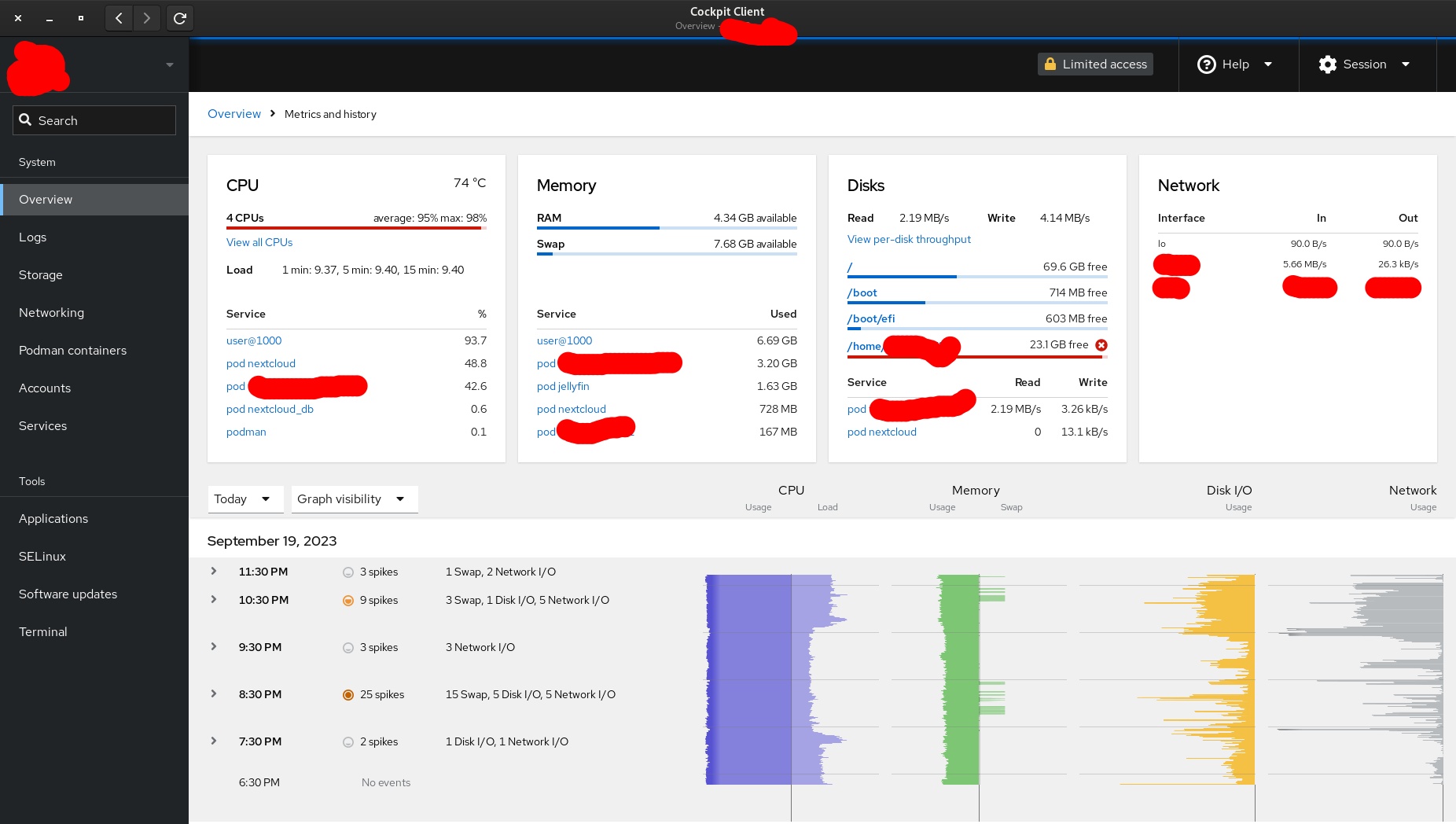Until yesterday, I didn’t even know you could use the docker images and the same docker-compose configs with Podman.
The UI you are looking at is Cockpit, which can be installed on almost any Linux Server. I have used it before but I am amazed by its integration with Podman.
Seriously, consider trying this, once.
Here's another screenshot of Cockpit:

podman is almost AFAIK 1:1 compatible with docker, the team does great work on it
welcome to fedora!
Yes, it is! If you just run
alias docker=podman, you won't even have to remember that you're running Podman, and not Docker.I am still having problems with SELinux, though, so I have just turned it to permissive. Any guides for that?
Judging by the screenshots, this looks very similar to Portainer. Are they basically the same tool set for different container architectures? Looks pretty interesting.
I think so. But portainer may have more features.
podman-composeis not officially developed by the team that develops Podman, so it is not exactly integrated within Cockpit. But portainer has all the options, including environment variables, etc. There are guides available for installing Portainer with Podman, but I am not sure how reliable it is.Cockpit is not for Podman only. We can even create and manage VMs with a display, if we install the required tools. Cockpit is a tool to manage a headless server, like storage, updates, services, etc.
Is it possible to connect docker / podman directly to the router? I'm operating an L2 bridge https://developers.redhat.com/articles/2022/04/06/introduction-linux-bridging-commands-and-features systemd-nspawn containers can connect to my router directly, but how to do it with docker / podman?
I started with podman and wanted to like it. Ultimately moved to docker because of docker compose
